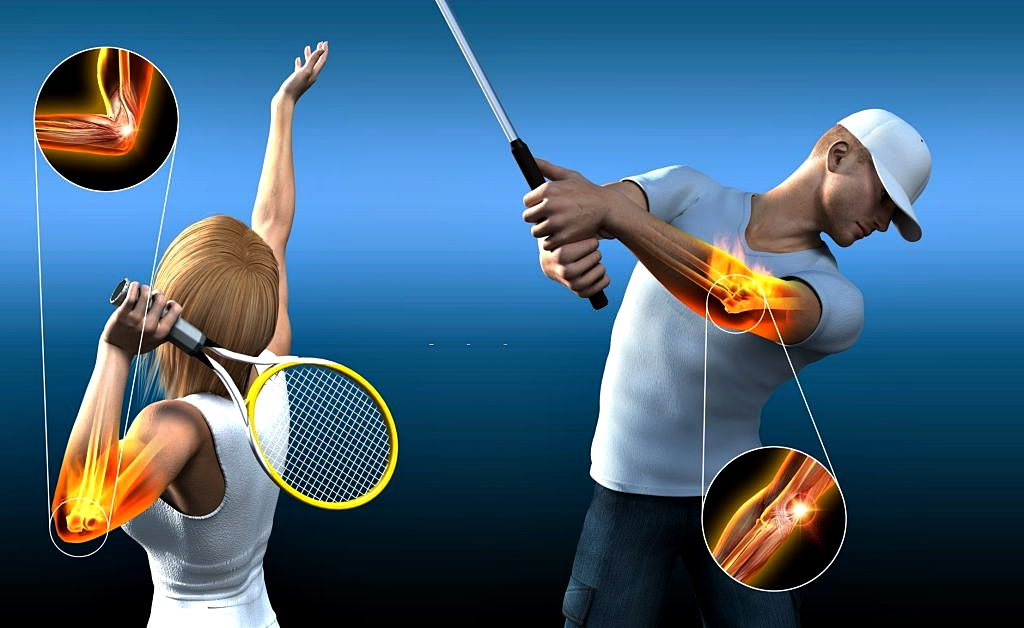Tennis elbow usually develops when an arm is often exposed to one-sided strain. Here you can find out what causes tennis elbow and what helps.
What’s a Tennis Elbow?
A tennis elbow causes pain on the outside of the elbow, which can radiate into the whole arm. The phenomenon is often caused by strong and / or one-sided strains – for example during handicrafts or club sports. It can take several months for a tennis elbow to heal. Strengthening exercises for the forearm and wrist can accelerate the healing process.
Causes and Risk Factors for Tennis Elbow
It is not yet completely clear why a tennis elbow develops. It used to be thought that inflammation of the muscles could be responsible for this. Nowadays, experts tend to believe that various types of stress cause tiny injuries and signs of wear at the base of the tendons of our muscles. Especially sudden and strong strains with an underdeveloped forearm musculature at the same time can favour a tennis elbow. If an arm is permanently stressed on one side, this can also lead to a tennis elbow. These triggers and risk factors exist:
- Heavy lifting, e.g. of furniture during removal
- Sports such as tennis or rowing
- Craftwork, e.g. painting or carpentry
- Overload due to PC work
- Playing musical instruments such as violin
Although the name “tennis elbow” indicates that the pain is mainly caused by this sport, tennis is in comparison rather a rarer trigger for the disease.
What are The Symptoms of Tennis Elbow?
The discomfort of tennis elbow is noticeable in almost all movements of the arm, e.g. bending, stretching, turning or lifting as well as touching. Even small strains such as gripping objects can cause pain in the hand. The following symptoms are typical of tennis elbow:
- Pain on the outside of the elbow that can radiate into the whole arm and is intensified by stress.
- Difficulties in gripping and holding
- Limited mobility
- Sleep disorders due to pain at night
Often the discomfort is alleviated when the arm is held still, but the pain can also occur at night. By the way, pain can also occur on the inside of the elbow – this speaks for the so-called golfer’s arm, which is treated similarly to tennis elbow.
Therapy: Which Treatment Helps with Tennis Elbow?
Sometimes the pain improves after just a few weeks, but in most cases it lasts for several months. Some patients still have to struggle with the tennis elbow after one year.
The main aim of the treatment is to keep the arm and wrist as mobile as possible and to reduce pain. There are many different methods used by doctors, but not all of them have studies that show that the therapy is effective. The following treatment options are often used:
- Exercises to strengthen forearm and wrist (“eccentric training therapy”)
- Therapeutic gymnastics
- Wearing bandages to protect the muscles
- Cortisone injections against pain – but they can delay the healing process
- Painkillers like ibuprofen or diclofenac
There is no evidence of any effect of injection therapies (e.g. with autologous blood), laser or shock wave therapies, massages or acupuncture. The benefits of tennis elbow surgery are also controversial, but it is sometimes offered if the pain cannot be relieved for months.

